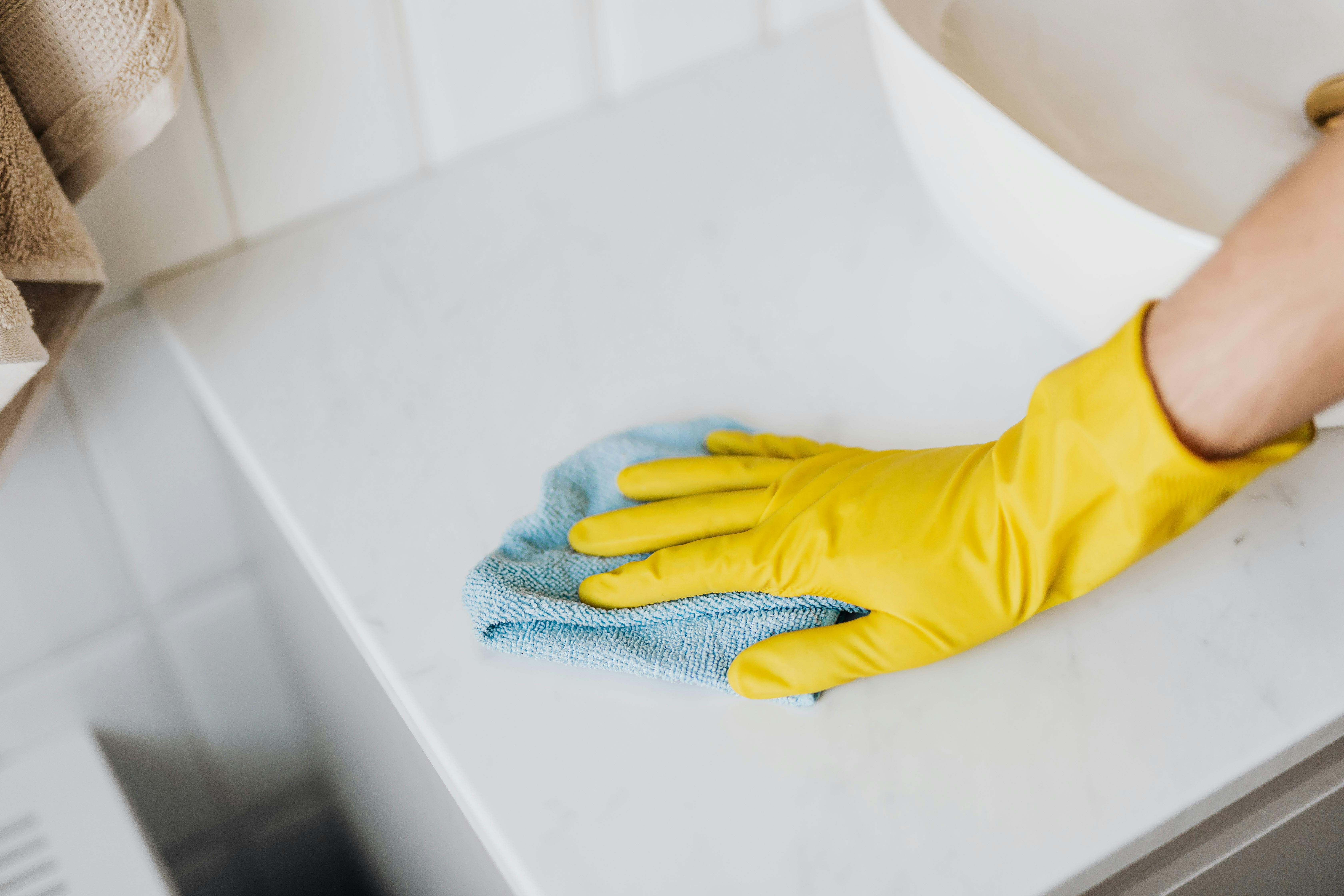Distilled white vinegar is a natural and cost-effective way to remove rust from any number of materials. It is an effective rust remover because it contains acetic acid, which reacts with the iron oxide (rust) to dissolve it. Vinegar is easy to use and requires no special equipment or harsh chemicals. In this article, we will explain how to use distilled white vinegar to remove rust from metal surfaces.Yes, distilled white vinegar can be used to remove rust. The acetic acid in vinegar reacts with the rust to dissolve it off of metal surfaces. To use it, soak the metal in white vinegar for a few hours and then scrub the rusty paste away with a wire brush.
What is Rust?
Rust is a type of corrosion that occurs when iron, steel, or other metals react with oxygen in the presence of water or moisture. Rust forms a reddish-brown layer on the surface of the metal, which is generally weaker than the original material. Rust can spread and weaken metal structures over time, leading to potential failure. It is also an aesthetic problem that can ruin the look of buildings, cars, and other objects made from metal. Rust can be prevented through proper maintenance and treatment with protective coatings.
What Causes it?
Rust is caused by a combination of water and oxygen reacting with iron or steel molecules. This reaction creates iron oxide, which breaks down the material’s strength and structure. When exposed to moisture or water for long periods of time, rust will continue to form and penetrate deeper into the metal’s surface. Salt water accelerates this process by increasing the electrolytic reaction between metals and their environment. In addition, dirt or other contaminants can provide a medium for rust formation as they trap moisture against metal surfaces.
What is Distilled White Vinegar?
Distilled white vinegar, also known as white vinegar, is a type of vinegar made by fermenting ethanol and water. It’s commonly used in cooking, cleaning, and even as a natural home remedy. Distilled white vinegar is made from grain-based ethanol that has been distilled to produce a colorless solution. The resulting liquid is then combined with acetic acid bacteria to produce the acidic flavor of vinegar. This type of vinegar has a sharp, acidic taste and is usually used as an ingredient in dressings or marinades, or to pickle vegetables. It can also be used for cleaning purposes around the house due to its antiseptic properties.
How Does Distilled White Vinegar Remove Rust?
Rust is a common problem that can be found on metal surfaces like tools, vehicles, and furniture. Removing rust can be a difficult and tedious task, but distilled white vinegar is an effective solution. Distilled white vinegar is made from acetic acid, which reacts with the iron oxide in rust to dissolve it away. The acetic acid in the vinegar breaks down the rust into iron and chloride ions, allowing it to be easily wiped away with a cloth or scrubbed off with a brush.
The process of removing rust with distilled white vinegar is fairly simple. First, apply the vinegar to the rusty surface and let it sit for several minutes. This will give the vinegar time to react with the rust and break it down into its component parts. After a few minutes, scrub the surface with a brush or cloth to remove any remaining rust particles. If necessary, you can repeat this process until all of the rust has been removed.
In addition to being an effective method for removing rust, distilled white vinegar is also an affordable option compared to other chemical solutions. It is
Preparing the Surface Before Cleaning with Distilled White Vinegar
Preparing the surface before cleaning with distilled white vinegar is an important step in ensuring a successful cleaning outcome. The surface should be free of dirt, dust, and other debris before applying the vinegar. This can be done by wiping down with a damp cloth or using a vacuum cleaner to remove any loose particles. Depending on the type of surface, it may also be necessary to scrub any stubborn stains or spots with a non-abrasive brush or sponge. After prepping the surface, it is important to rinse it off with fresh water and let it dry completely before proceeding with the cleaning process.
Distilled white vinegar is a mild yet effective cleaner that can be used on most surfaces including tile, porcelain, and glass. When using this product, it is important to dilute it in water according to manufacturer instructions as undiluted vinegar can cause damage to certain surfaces. Once diluted, apply the solution directly onto the surface and let sit for several minutes before wiping off with a damp cloth or sponge. For extra tough stains, leave the solution on for up to an hour before wiping off

Applying Distilled White Vinegar to the Surface
Distilled white vinegar is an effective and cost-efficient way to clean a variety of surfaces. It can be used to remove dirt, grime, and other debris from surfaces such as countertops, floors, and walls. Vinegar is also a natural disinfectant, making it ideal for cleaning areas where bacteria and germs can lurk. Applying distilled white vinegar to a surface is a simple process that requires minimal effort.
Begin by preparing the surface for cleaning. If necessary, use soap and water to remove dirt or debris from the surface before applying the vinegar. This will ensure that the vinegar is able to penetrate deep into the pores of the material being cleaned. Once the surface has been prepped, fill a spray bottle with distilled white vinegar and spray it evenly over the area being cleaned. Allow the vinegar to sit on the surface for several minutes before scrubbing it with a brush or cloth.
For tougher stains or dirt deposits, use a brush or scrubber pad with a bit of extra pressure when applying the vinegar. After scrub
Allowing the Distilled White Vinegar Time to Work
Distilled white vinegar is an excellent cleaning agent that can help remove stubborn dirt and grime from surfaces. To get the best results, it’s important to allow the vinegar time to work before wiping it away. Start by spraying the surface generously with distilled white vinegar and then let it sit for a few minutes. This will give the vinegar time to break down any dirt, grease, or grime that may be stuck on the surface. If you’re dealing with particularly stubborn dirt or stains, you can let the vinegar sit for up to 15 minutes before wiping it away.
When you’re ready to wipe away the vinegar, use a microfiber cloth or a damp rag to gently wipe away any remaining dirt and residue. You may need to use slightly more pressure if there are still tough stains that won’t come out. You may also need to do multiple applications of vinegar if the surface is especially dirty or stained. Once you’ve wiped away all of the dirt and grime, you should rinse off any remaining residue with clean water.
Using distilled white vinegar as a cleaning agent is an effective and eco-
Removing the Rust with a Scrubbing Brush or Steel Wool
Removing rust from metal surfaces can be done using a few simple tools. One of the most common and effective methods is to use a scrubbing brush or steel wool. This method is especially effective for smaller objects, as it allows for precision control of the scrubbing process. The bristles of a scrubbing brush are able to reach into the crevices and grooves of an object to remove rust from hard-to-reach places. Steel wool is made up of small strands of steel that are twisted together, providing an abrasive surface for scrubbing off rust particles. It’s important to use steel wool that is not too coarse, as it can scratch the surface of the metal if used too aggressively. Both scrubbing brushes and steel wool should be used with caution, as they can cause damage to softer metals if not used correctly.
Once the rust has been removed with a scrubbing brush or steel wool, it’s important to clean off any remaining residue with either a damp cloth or a solution of water and mild soap. This will ensure that all traces of rust have been removed and will help

Conclusion
Distilled white vinegar can be a great and cost-effective way to remove rust from different surfaces. It is safe to use and does not cause any damage to the surface. However, it is not suitable for all types of rust, as it may not be able to remove deeper or more stubborn rust stains. In those cases, it is best to use another type of rust remover specifically designed for that purpose. Overall, distilled white vinegar can be an effective and affordable solution for many types of rust removal.
In conclusion, distilled white vinegar can be used successfully to remove rust from different surfaces. It is safe, cost-effective and easy to use with no special tools required. However, it may not always be suitable for more stubborn or deeper rust stains so it is important to consider all of the options before attempting to remove rust with distilled white vinegar.

